Favorite Fermentation Equipment: Vegetables
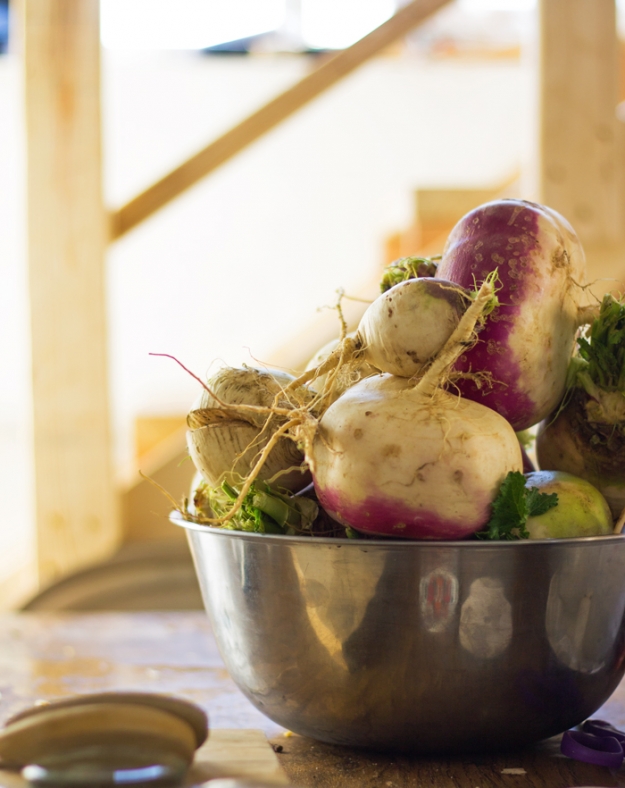
Since finishing up the final edits for TFF I’ve been thinking a lot about fermentation. You’d think after nearly a year on this project I’d be a bit done… but I’m maybe even more passionate about fermentation than ever.
One thing I wanted to communicate in the Vegetables Chapter of TFF, besides providing some unique and delicious recipes, is that you do not need any fancy equipment to ferment vegetables. There are some basic principles to follow in the fermentation process that are key to consistently delicious and well-preserved pickles – which I cover in the book – but fancy equipment simply isn’t necessary.
It was really important to me to emphasize that preserving all types of food without refrigeration can be done simply and effectively through lacto-fermentation. Just look at how our ancestors used fermentation to preserve food!
With that, I thought I’d share the minimalist equipment I use over and over again for making krauts and traditionally lacto-fermented pickles with all sorts of vegetables.

Mason Jars
These guys do so much in our kitchen – holding the morning’s milk or storing away canned meat, keeping ferments and storing leftovers. Because so many of us own them and because I personally use mostly quart and half-gallon mason jars for fermenting, I include a whole section in the Vegetables Chapter on tips for successful mason jar ferments.
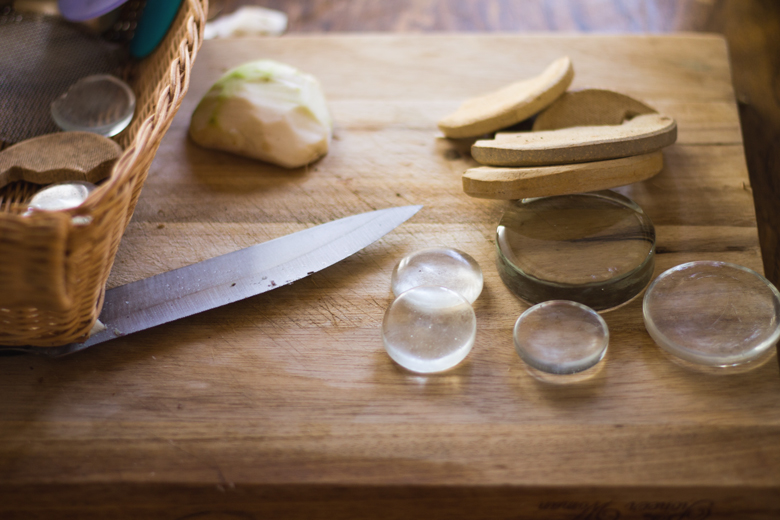
Heavy Fermentation Weights
This single-purpose piece of equipment is probably the only specialty item I use for fermentation. Most of my weights came via my work for Cultures for Health. A heavy, sturdy weight is imperative to good, consistent fermentation so my current favorite is this variety. You do not need to purchase weights, however. In TFF I have a section on homegrown and edible weight ideas.
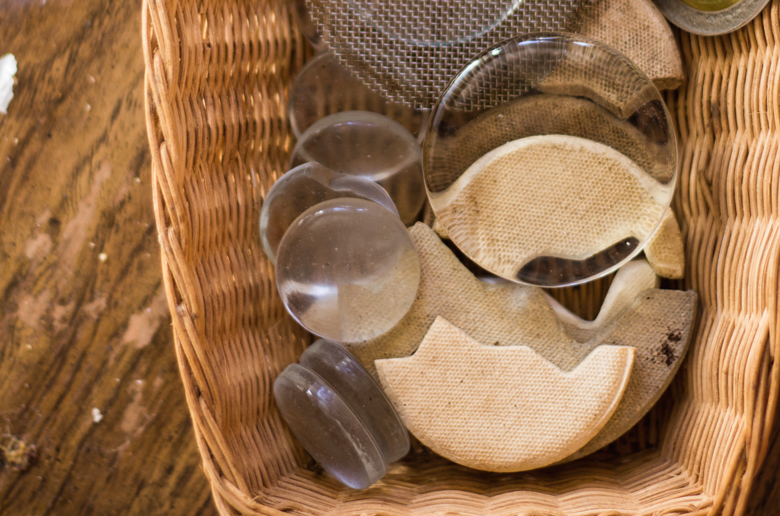
Two-Gallon Jars
I sometimes use these for Open-Crock Sauerkraut ferments. If you’re preserving loads of vegetables in a cellar with a consistently cool temperature, this is a good option. Likewise, fermentation crocks are worth the investment if you are putting up loads of produce year after year.
Mandolin
I found one of these guys at a thrift store a few years back and it really transforms the kraut making process. I was working in a tiny corner kitchen with no counter space at the time and this mandolin made it possible to sit on the floor with a huge bowl in my lap and slice away. It really speeds up the process but is only truly useful for cabbages and some root vegetables.
That mandolin got broken somewhere along the way – a foregone conclusion when you thrift it for $2 – so now we’re back to the dependable cutting board and knife.
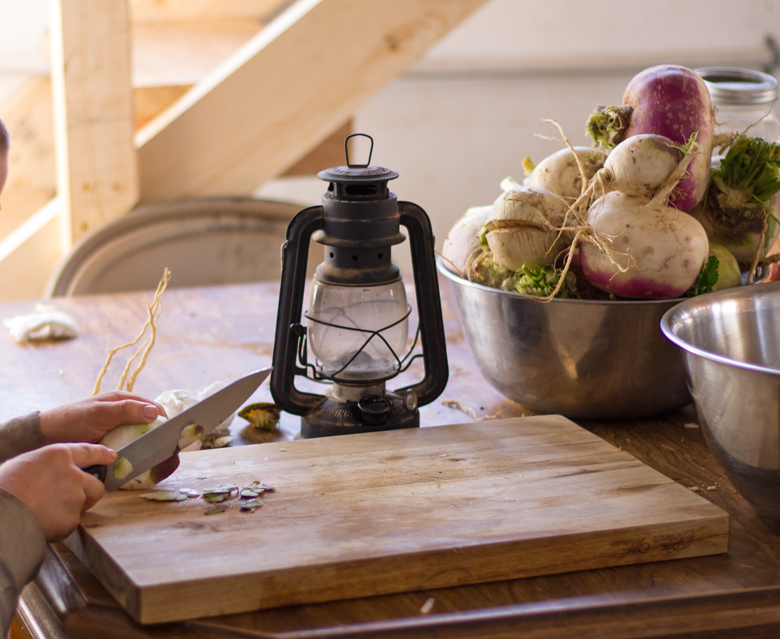
The Equipment I Don’t Use
Note that I didn’t mention airlocks. I own some and use them, especially since it comes with the 1/2-gallon Fermented Vegetable Master we have, but have never noticed a considerable benefit from them. In side-by-side comparisons, I have found that proper technique and best practices in a mason jar will give you just as much protection against mold, delicious flavor, and perceptible health benefit as an airlock.
I also rarely use a kraut pounder. I simply salt those self-brining vegetables such as cabbage and walk away from the bowl for 30-60 minutes. By then the juices have been drawn out and the process of mixing and packing does the job for you.
And because many people ask about this, I almost never use starter cultures like whey or dried culture starters. Not only is it not necessary, but I personally prefer the flavor of ferments without them. Again, if you understand the biological process, which I outline in TFF, you’ll realize that you have everything you need right there in your vegetables, salt, and water.
So while proper, clean equipment helps, a simple understanding of the process will take you so much further. A ridiculous collection of mason jars doesn’t hurt, though.
p.s. Anybody want some turnips? 😉

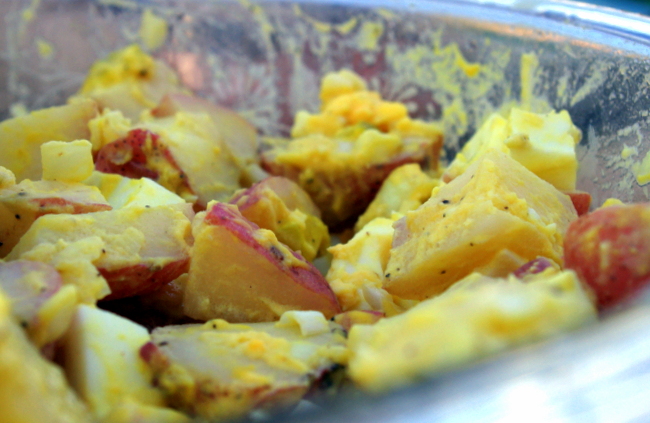
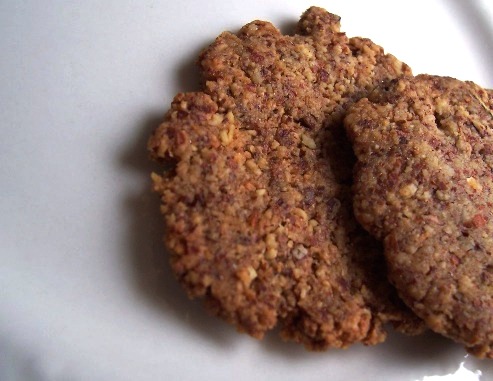
In 2011, you inspired me to start with raw milk and now I’m an avid locavore and fermento myself. I use almost no special equipment for fermentation, except one med size open crock I received as a christmas present. Otherwise, it is all jars with bags or other jars inside them as weights, no starter culture, no “sterilization” either. We love our kimchi, sauerkraut, sauerubben, sour beets, fermented ginger carrots, salsa, and fermented green tomatoes and eat something fermented almost every single day. Thank you for spreading this low tech, time honored tradition. Looking forward to the book!
TFF???
Traditionally Fermented Foods
Thank you for the tips! Our Napa cabbage is just about ready for harvest, so I’ll be starting some kimchi soon. Perhaps I’ll invest in some proper weights this year instead of the assortment of plates and ziploc bags filled with water that I have used in the past.
I cannot wait for your book to come out. 🙂
I would love some!! ?Thank you for wealth of information I have benefited from your site! I have 3 smalls sons with a severe digestive disorder that food is healing. Resources like yours bring me SO much encouragement in a world that a very few have any support for the ‘treatment’ for my sons. I can quickly lose my perspective amongst a population that largely scoffs at ‘healthy’ food, even tho they have made so much progress already!! You have blessed me often although you have never met me…..I pray we meet in Heaven at least, some day……
I am glad to see you say, “I almost never use starter cultures like whey or dried culture starters.”
I am allergic (not lactose intolerant) to dairy. Can I follow your process without using dairy products? The words lacto-fermentation always give me pause and I have never tried this because of it.
I only recently found your blog and was happy to see your posts on fermentation. My mother filled two crocks full of cabbage and let it ferment in the corner of our kitchen. She also fermented every vegetable that she grew or could get her hands on. She died of cancer when I was yet a child but I remember when the cancer had spread to her colon and small intestine, the only way she could keep her bowls from totally blocking was to eat kraut and drink the juice. I have followed in my mom’s footsteps and I, too, ferment everything I can get my hands on. This year, between my daughter’s garden and our garden, I put up 45 quarts of kraut and 12 pints of kimchi. I am fermenting more ginger carrots now. Will your book be available for my tablet?
I am ANXIOUSLY awaiting my TFF!!!!! ;o)
(((HUGS)))
I LOVE fermenting! I definitely need to get some good weights though, I like the glass weights you showed! And my mandolin is a huge time saver!
Thanks for sharing this is all good to know.
Good to know about the air lock. I bought one because I thought it would reduce the mold I got with my pickles.
Those turnips are gorgeous! I love turnips! Those weights seem fabulous, I need to get some of those. I think that would help my ferments be more successful.
Wonderful tips, I need to get some kraut started!
Great post! Shared and pinned!